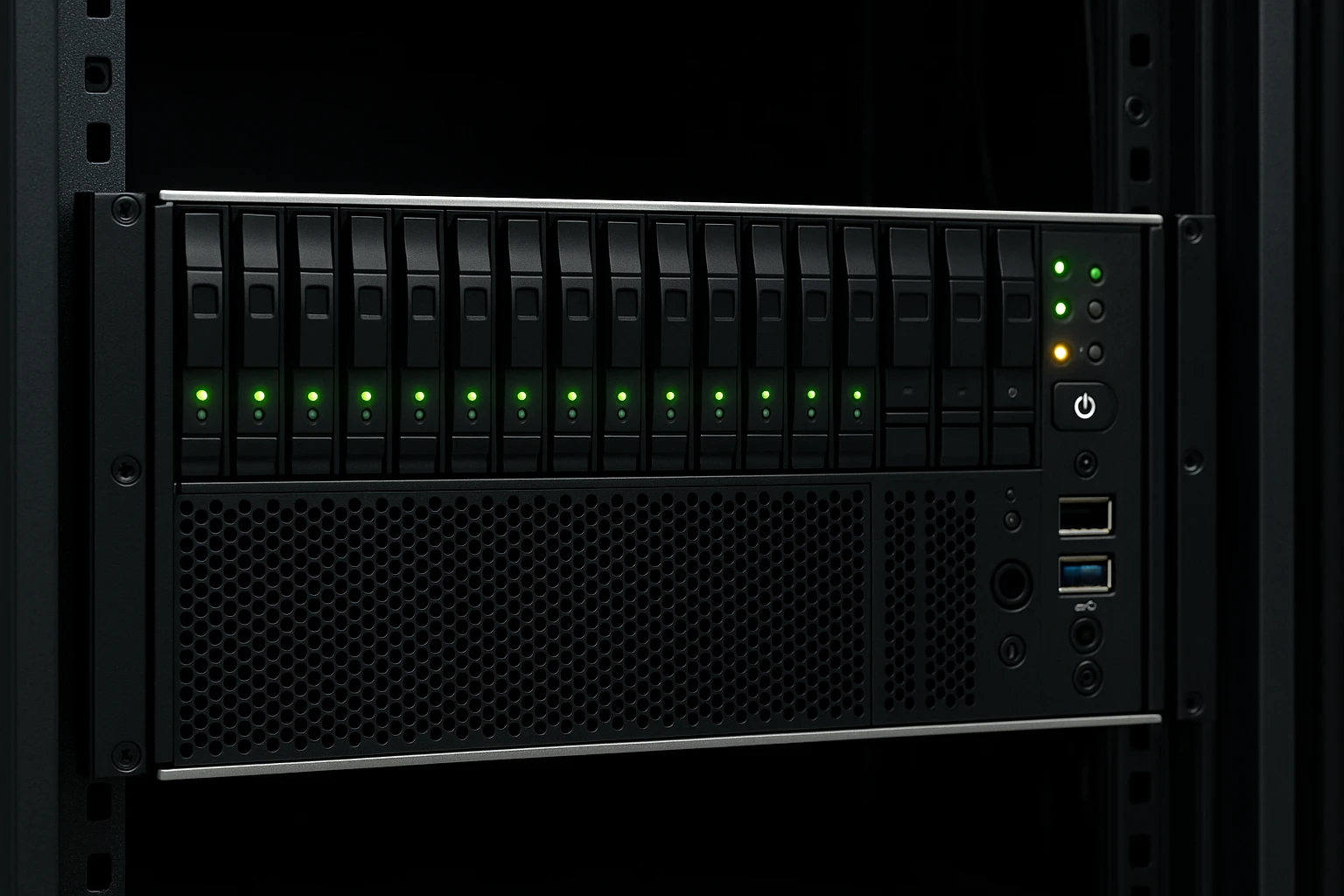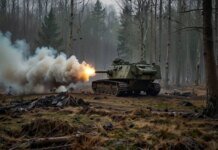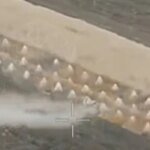
Rack space rental is one of the key considerations when designing a server infrastructure, as the number of servers that can be installed in a single rack directly affects the efficiency and cost of operation. It determines not only the total computing capacity but also energy consumption, cooling requirements, maintenance convenience, and overall system reliability.
Rack density has become an increasingly important topic for companies operating cloud services, virtualization platforms, and artificial intelligence systems. As equipment performance grows, so does the thermal load on the racks.
This article explains what a server rack is, how rack density works, and how many servers can realistically be installed depending on specific tasks and operating conditions.
What Is a Server Rack and Rack Units (U)
A server rack is a metal frame or cabinet designed to hold servers, networking, and auxiliary equipment. The main industry standard is the 19-inch rack, meaning the mounting rails are 482.6 mm wide. This format is used worldwide, ensuring compatibility between equipment from different manufacturers.
Rack height is measured in rack units (U), where 1U equals 1.75 inches (44.45 mm). A 2U server occupies two rack units, while a 4U server takes up four.
Common rack formats include:
- 42U — the standard for corporate and commercial data centers;
- 45U and 48U — used in high-density facilities;
- 24U and below — typical for branch offices or small server rooms.
Each rack is equipped with mounting rails, ventilation holes, cable channels, and Power Distribution Units (PDUs). The efficiency of cooling and ease of maintenance largely depend on how well the internal space is organized.
How Many Servers Fit in a Standard Rack
Theoretically, a 42U rack can accommodate:
- 42 servers in 1U format,
- 21 servers in 2U format,
- 10 servers in 4U format.
However, in practice, some space is occupied by additional components such as PDUs, switches, cable management panels, and monitoring systems. As a result, the actual usable capacity is 10–15% lower.
For example, although a 42U rack can theoretically hold 42 one-unit servers, in reality, the number is limited to 35–38 devices. The remaining units are reserved for power distribution and ventilation.
It is also crucial to consider power consumption in addition to physical dimensions. Even if the servers fit by height, their combined power draw may exceed the rack’s rated limit. For instance, 35 servers at 500 W each create a load of 17.5 kW, which is considered high-density and requires enhanced cooling.
The Impact of Form Factor and Rack Density
The form factor of a server determines not only its height but also its chassis depth, cooling method, and the number of components that can be installed.
1U servers are thin and lightweight, commonly used for web hosting, microservices, and distributed applications. Their advantage is high density, while the drawback is limited cooling capacity.
2U servers are a universal option suitable for most enterprise environments. They can accommodate powerful CPUs, more storage drives, and additional memory modules.
4U servers are used for high-load applications such as video processing, virtualization, and machine learning. They require more rack space but deliver higher performance and better cooling efficiency.
Rack density is typically measured in kilowatts per rack (kW per rack):
- Low density — up to 5 kW (office server rooms).
- Medium density — 5–15 kW (standard corporate data centers).
- High density — 15–30 kW (cloud, AI, and HPC environments).
- Extreme density — 30–80 kW and above (research facilities, supercomputing clusters).
The higher the density, the more efficiently the rack space is utilized — but also the greater the demand for power and cooling infrastructure.
Power Consumption and Cooling
Rack density is always limited by the thermal capacity of the environment — its ability to effectively dissipate heat.
Typical server power consumption levels are:
- 1U server: 300–600 W
- 2U server: 600–1200 W
- GPU-powered server: up to 2000 W or more
Even a standard rack with 30–35 servers can consume 10–20 kW. If the cooling system cannot handle this load, the temperature will rise rapidly, shortening component lifespan and reducing system stability.
There are three main cooling methods used in data centers:
- Air Cooling — cold air is supplied to the front of the rack and hot air is exhausted from the back. Effective up to 10–15 kW per rack.
- Liquid Cooling (Direct-to-Chip) — coolant circulates through heat exchangers that remove heat directly from CPUs and other components. Suitable for 20–40 kW racks.
- Immersion Cooling — servers are submerged in a dielectric liquid that evenly transfers heat away from all components. Used for 50 kW and higher loads.
When calculating rack power capacity, it’s important to consider PUE (Power Usage Effectiveness) — the ratio of total data center power consumption to that of IT equipment alone:
- PUE 1.6 — average efficiency.
- PUE 1.2 — good efficiency.
- PUE 1.1 or lower — achievable only with advanced liquid cooling systems.
How to Calculate Optimal Rack Density

The calculation begins with evaluating the power of the equipment.
- Determine the power consumption of a single server (for example, 600 W).
- Find out the allowable rack power (for example, 15 kW).
- Calculate the safe load — no more than 80% of the limit:
15 × 0.8 = 12 kW. - Divide the available power by the power of one server:
12,000 / 600 = 20 servers.
Thus, the optimal number is 20 devices. The remaining rack units should be reserved for auxiliary equipment and ventilation.
If GPU servers or other high-load equipment are planned for installation, the permissible rack power should be reduced.
Tips for Optimizing Rack Layout
- Distribute the load. Place heavy and hot servers at the bottom, lighter ones at the top. This improves air circulation.
- Use blank panels. Empty rack units should be covered so that hot air does not return to the front of the rack.
- Monitor temperature. The air temperature at the server inlet should not exceed 27 °C.
- Keep a power margin. Do not exceed 80% of the available rack power limit.
- Organize cable management. Neatly arranged cables improve ventilation and simplify maintenance.
- Separate hot and cold aisles. This layout increases cooling efficiency.
- Use smart PDUs and monitoring systems. They display real-time power consumption and help balance the load.
- Plan for growth. When designing, provide at least a 20% reserve in rack units and power capacity.
What to Remember When Planning Rack Density
The number of servers in a rack depends not only on its physical dimensions but also on power and thermal parameters. Physically, dozens of devices can be installed, but the actual limit is determined by the available power supply and cooling capacity.
With proper density planning, it’s possible to achieve a balance between efficiency and stability. Optimal values are 10–15 kW for corporate systems, 20–30 kW for cloud environments, and up to 60 kW for computing clusters.
Understanding rack density principles helps companies use space efficiently, reduce operating costs, and scale their infrastructure without the risk of overheating or downtime.































